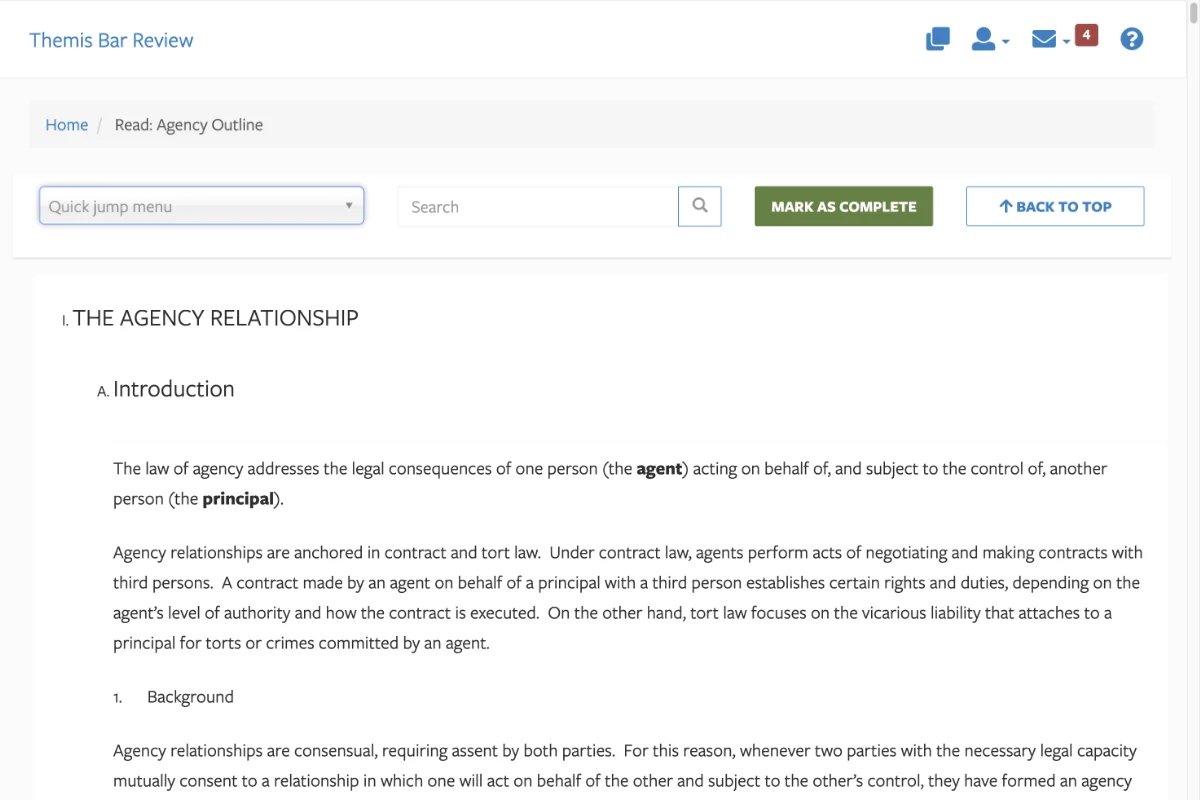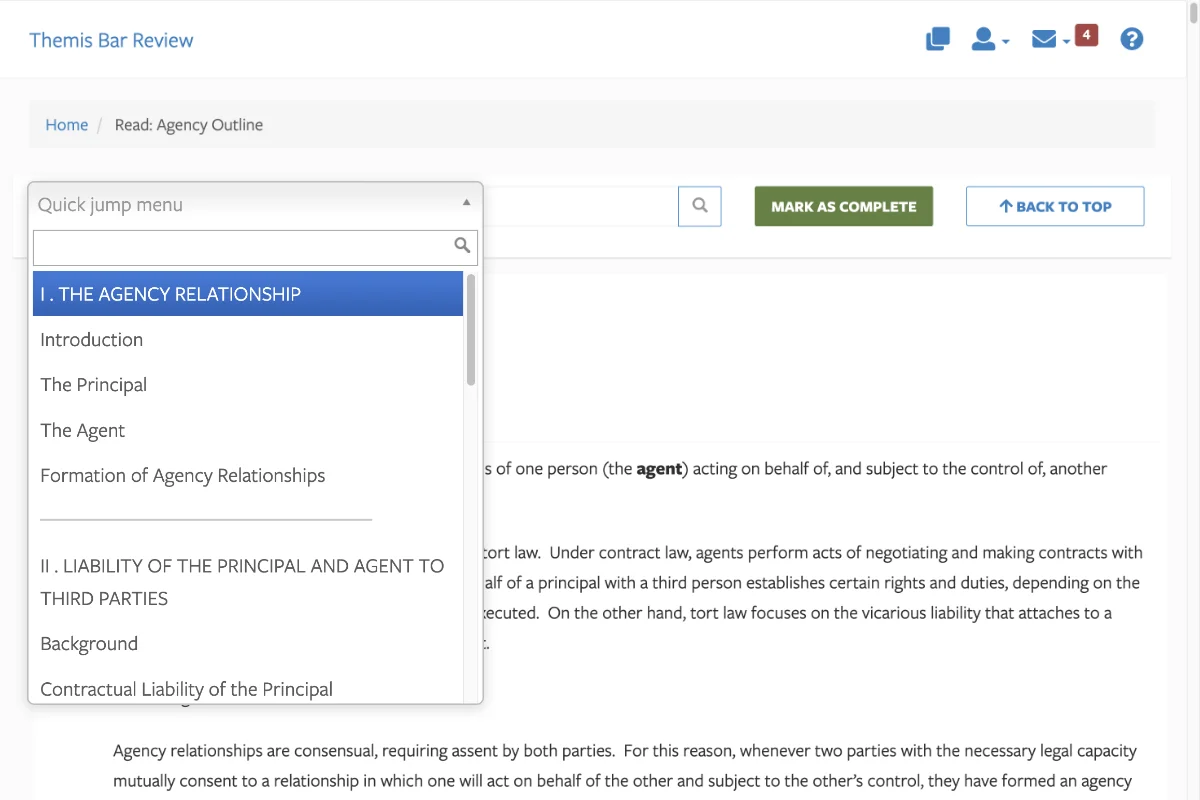The Art of Outlining for 1L Final Exams
Outlines. You've undoubtedly heard about how important they are when preparing for exams. However, despite having a general idea of what an outline is, many fresh law school students don't fully understand how to make or use them. Whether you're an incoming law student or making your way through your first semester, this article will teach you the art of outlining for 1L final exams and turn your anxiety into confidence.
What Makes a Good Outline?
The best law school outlines summarize a semester's coursework: key legal concepts, blackletter law, hypothetical scenarios, notable case names, and case law. Your outline should be dynamic. Think of it as a living document that evolves throughout the semester, incorporating regular updates and refinements, until you're left with a final version that distills course content to its most critical elementals.
Too often, students view their course outlines as a document that should contain everything you could possibly know about a subject. When outlines get too long or expand too far into nuance, they are less effective as study tools. A strong outline is one that is focused and concise.
As you synthesize coursework into an outline, you'll develop an intuition for how concepts fit together and hone your understanding of legal rules and how to apply them. And if you create a truly effective outline, you can save it for when you start studying for the bar exam.
How to Create an Outline in 3 Steps
Creating a useful outline can be broken down into three key steps: Prepare, Structure, and Refine.
- Case briefs
- Class notes
- Textbook readings
- Supplementary materials
1. Prepare
Start preparing early in the semester to avoid cramming and allow for gradual developments and regular updates. Make an effort to understand concepts and laws before incorporating them into the outline. Finally, prioritize your class notes, which are often directly relevant to the exam content set by your professor.
Include information from the following materials:
2. Structure
Now, it's time to organize the information into a logical flow. You can choose to structure your outline thematically or chronologically. Whichever way you decide, use your syllabus or casebook as a foundation. Consider how the topics connect to each other and use headings and subheadings to break down subjects into manageable sections, starting with broad legal principles and funneling down to specific cases and applications.
As with any outline, use Roman numerals, bullet points, numbers, or letters to structure information and keep related topics together for easy review. Make sure to incorporate rule statements for each topic, using class notes as your primary source and supplementing with cases or other materials.


3. Refine
As you work through the semester, continue breaking down legal rules into easy-to-understand parts. Add succinct summaries of relevant cases and hypothetical examples that demonstrate the application of laws. Review your outline often. This will help you link topics and subtopics as you better understand the material. Don't be afraid to reach out to peers. Sharing your outlines will give you fresh perspectives, revealing areas for improvement and clarifying any confusing information.
How to Get the Most From Your Outline
Understanding how to use your outline is just as important as learning how to create it. Here's how to get the most out of it.
Active Learning:
Active learning helps solidify your understanding and enhances retention. Don't just passively read your outline. Interact with it. Quiz yourself on various sections, explain concepts out loud as if you're teaching someone else, and create hypothetical scenarios to apply legal principles.
Tailoring Outlines to Expected Exam Questions:
Gather insights from professors during office hours, talk to peers or students who've previously taken the class, and analyze past exams if available. Tailoring your outline to potential exam questions ensures that you're focusing on the most relevant material so that you're prepared for your final exams.
The Role of Commercial Outlines and Outline Banks
Ask your peers about outline banks. These banks contain notes from students who have previously taken a class. However, these banks could be outdated or based on the same course taught by a different professor. If you're looking to supplement your outlines, it's better to go with a reputable commercial outline.
Fortunately, Themis Bar Review offers a Law School Essentials® course that includes comprehensive law school outlines with explanations and examples of blackletter law for each subject, as well as exam tips. You can also hone your exam-taking skills with multiple-choice and essay practice questions, and get additional context for what you learn in class with bite-sized video lectures and Key Concept Sheets. The best part? It's all totally free.
Outlining Beyond 1L
Outlining isn't just a skill for surviving your first year of law school. It's a tool that will serve you throughout your legal education and career. Advanced courses require a deeper level of analysis and synthesis of legal concepts. Your outlines will evolve to accommodate these demands. Most importantly, the skills you develop in creating effective outlines—organization, analysis, and synthesis—are the same skills that will make you a successful lawyer.
Recent Posts
Law School Outlining for Final Exams: Apply, Don’t Memorize
1L November Playbook: Use Your Law School Outlines to Finish Strong
Law School Note taking: Five Things That Belong in Your Class Notes
Elements = Legally Significant Facts
How to Recover After a Difficult Law School Semester
Best Study Strategies for Neurodivergent Law Students
7 Highly Effective Memorization Techniques for the Bar Exam
7 Legal Writing Tips for Law Students
The Art of Outlining for 1L Final Exams
Balancing Academics and Extracurriculars: Time Management Tips for 2L Students
7 Strategies to Prepare for the Socratic Method During 1L Year
How to Make a Bar Exam Study Schedule | 5 Tips with Examples
A Law School Student’s Guide to Stress and Burnout
Ace Your 1L Exams: 9 Actionable Tips from an Attorney
Tackling the MPRE with Confidence
A 1L Student's Guide to Legal Language
Navigating Your First Year of Law School: Tips for Success
Trust, Transparency, Results: The How and Why of Themis Pass Rates
Holiday Party Etiquette Advice for Almost Lawyers
Halloween Costumes That Only a Lawyer Could Love
Secrets To Breaking Through The 'Breaking Points' of Law School and Beyond
Brutally Honest 1L Advice From A Brilliant, Bitterly Brunette Attorney
2L/3L Life: 10 Preach-Free Pieces of Advice for Almost Lawyers



